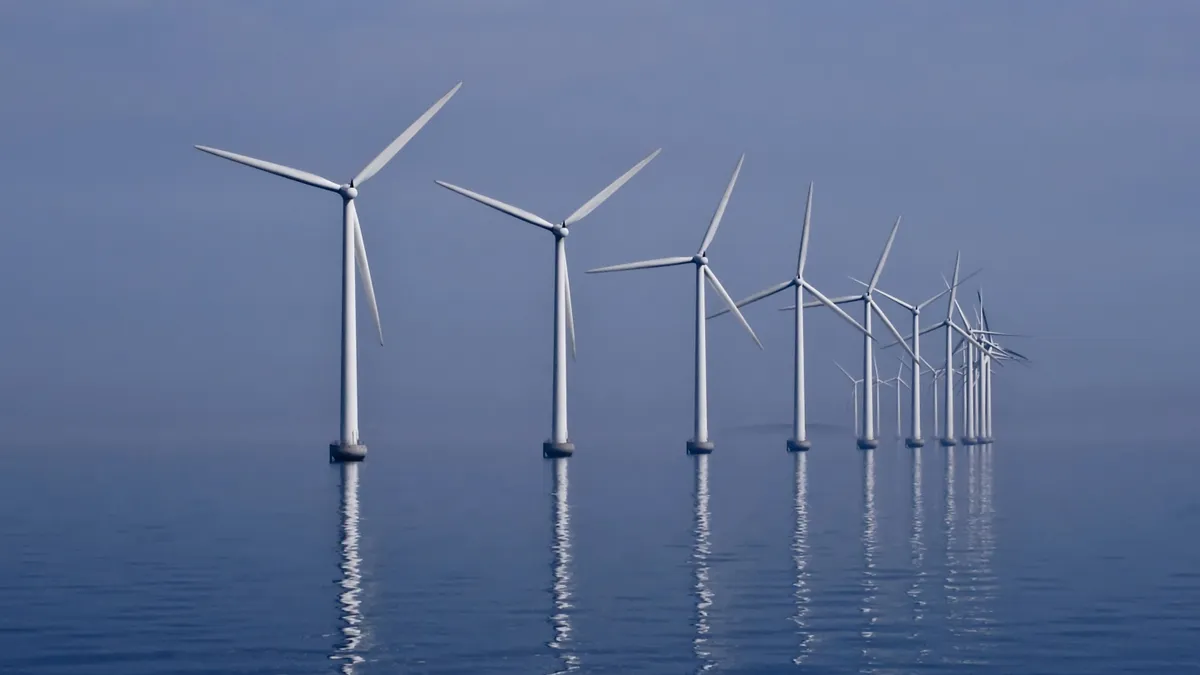Dive Brief:
- Maryland this week took a step towards development of an offshore wind farm, and opened a docket to begin reviewing two projects which have submitted applications.
- The state directed US Wind Inc., a subsidiary of Toto Holding SpA, and Skipjack Offshore Wind LLC, owned by Deepwater Wind Holdings, to file applications by the end of this month.
- Evidentiary and public comment hearings will be held in spring of 2017. The Maryland Public Service Commission must make a decision on the projects no later than May 17, 2017.
Dive Insight:
After a slow start, Maryland is ramping up efforts to develop wind energy off its coast. Governor Martin O'Malley signed the Offshore Wind Energy Act into law in 2013, creating $1.7 billion in subsidies for facilities up to 30 miles into the Atlantic Ocean.
Now, state regulators intend to go from application to approval in six months.
The PSC this week opened a docket to formally consider two projects the commission’s consultant, Levitan and Associates, indicated had applications that were administratively complete and "met the minimum threshold criteria," including technical, financial, economic and environmental standards.
Skipjack Offshore Wind is one of the two projects. The company is owned by Deepwater Wind Holdings, which is developing the 30 MW Block Island wind project three miles offshore Rhode Island. Expected to be complete later this year, it will be the first offshore wind project in the United States. But the Maryland project would be much larger.
According to Deepwater Wind, at 120 MW the Skipjack Wind Farm could be built in a single construction season and would be Maryland's largest renewable project. Located 17 nautical miles northeast of Ocean City’s coastline, the project would not impact views from Maryland’s shore.
The company said it has secured the rights to acquire the site’s federal lease, subject to regulatory approval, and could be operating by 2022.
US Wind's proposal would be even larger: Its plans call for installing 187 total turbines capable of producing up to 750 MW of power. According to the company, that would meet 100% of Maryland’s off-shore wind renewable energy goals, and could be online in 2020.
Of late, federal and state agencies have taken a second look at offshore wind potential despite its oft-prohibitive development costs. So far, the U.S. Bureau of Ocean Energy Management (BOEM) has awarded 11 commercial offshore wind leases for development; lease sales have generated approximately $16 million in winning bids for more than a million acres in federal waters.
Also this year, Deepwater's 30 MW Block Island wind project in offshore Rhode Island has began delivering turbines, preparing for the final phase of construction. Slated for completion by the end of the year, it would be the first commercial wind facility offshore the United States, with the deadline set for the end of the year.















